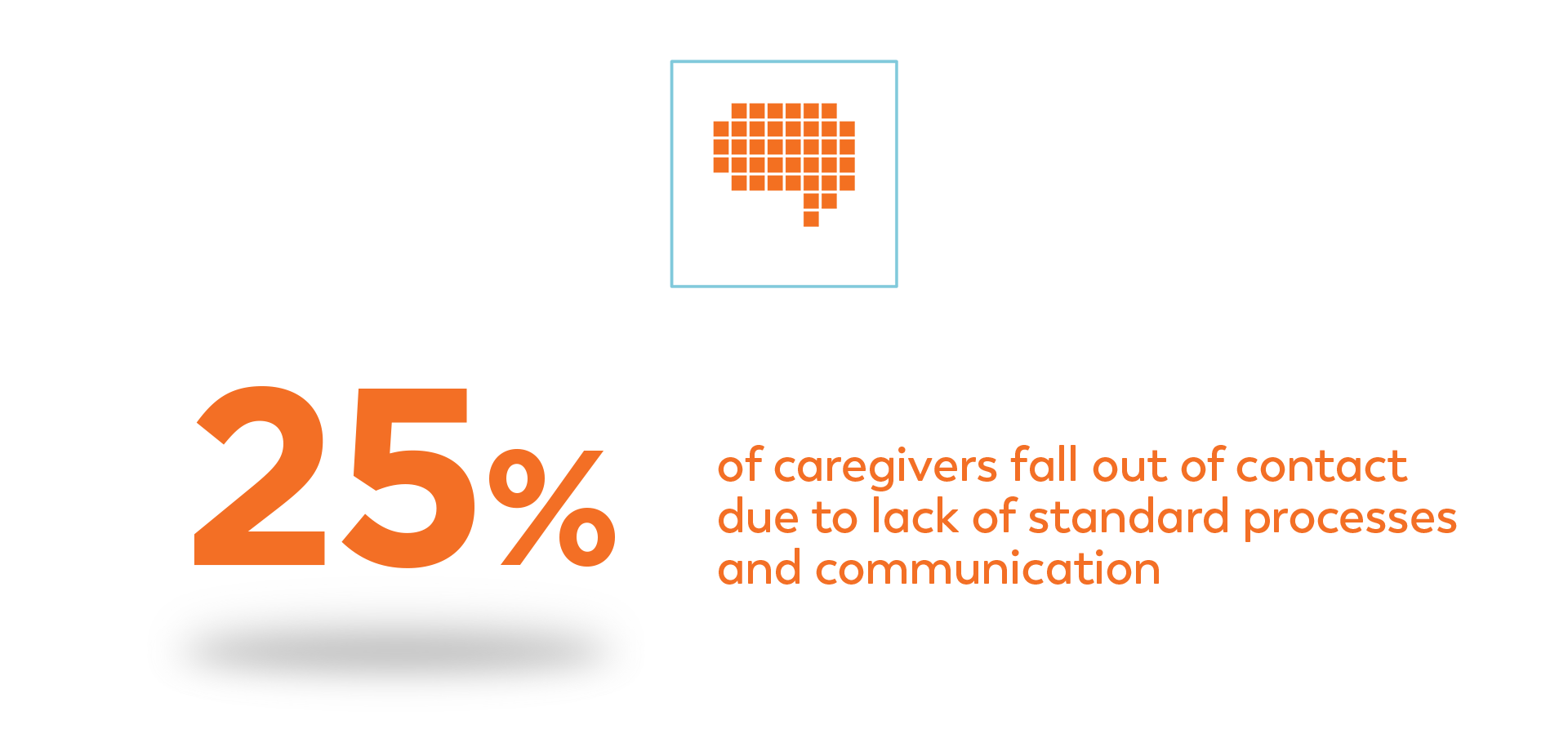How Scheduling Issues Impact Caregiver Turnover
Note: In the discussion below, Transcend uses the term caregiver to mean home care nurse or home care aide. The specific sector of home care is private duty nursing and personal care, not Medicare-certified home health or hospice. However, Transcend clients find many parallels in their own operations.
When it comes to private duty home care, scheduling is the lifeblood of operations. If scheduling isn’t running at full tilt, it can create a ripple effect of inefficiencies and frustration for caregivers and patients alike.
The home care scheduler
On the outset, perhaps it’s easy to look at caregiver turnover and say, “Oh, our retention issues are largely attributable to pay, the benefits, or the drive time to and from patients’ homes.” However, many home care companies don’t readily consider the role that the scheduler plays in caregiver turnover and burnout. If you think about it, schedulers – who go by many different names in our industry – are the main tether caregivers have to an organization. How equipped are schedulers in your organization to handle all the daily and weekly responsibilities they have on top of being a good communicator, matchmaker, counselor, documentation police, mind reader, etc.?
For their part, clinicians and caregivers can be affected by the inability of overworked schedulers to keep all of the balls in the air. As time goes on, their frustration can build. The risk of turnover mounts because caregivers in the field are consumers, too. Caregivers, like most people, have come to expect two-way communication, accessibility, transparency, autonomy, and for their preferences to be considered and prioritized.

Transcend’s research has found that 40% of schedulers spend less than 10% of their time on reengaging inactive caregivers or say it’s the responsibility of someone else on their team. 25% of caregivers fall out of contact due to lack of standard processes and communication. This likely means a lot of attention is being paid to recruitment efforts of schedulers to fill shifts and satisfy patient needs (how many cold calls have they made, how many interviews have they completed, how many new hires do they have scheduled for orientation), and not enough emphasis placed on keeping the caregivers already in the fold.
Knowing, then, that retention needs more focus, you can empower your schedulers to pay attention to this metric by ensuring that they are notified when a caregiver is inactive for over 30 days. Tie KPIs and performance incentives to schedulers looking beyond their star player caregivers (who are likely already burned out) by going down the roster and giving those newer caregivers an opportunity to fill in for a shift.
With proper training and intuitive technology that features automation and accessibility, schedulers’ time can be freed up to focus more on retention measures that go beyond calling caregivers only to fill shifts.
Technology is only part of the answer
It goes without saying technology is an inevitable part of resolving home care scheduling issues. These days most home care companies are at least dabbling in home care scheduling software. But if employees aren’t trained effectively, they can default to workarounds or treat their software as an adversary and not a useful tool.
Technology in its optimal form should empower office teams AND field staff with scheduling autonomy, although the human element of scheduling will never become obsolete.
Just as schedulers are the main connection point for caregivers, technology should serve as an extension of their work, not a barrier to it. The importance of user training cannot be overstated. It’s not enough to have a software account manager host a couple of one-hour training sessions with your entire team. As mentioned earlier, schedulers have many responsibilities. The phone’s ringing, caregivers are calling out, clients are needing help, so acclimating them to a technology that they’ll have to use all day every day will take more of an investment.
It’s important to vet scheduling software companies about their training processes. Are they holding your employees’ hand the whole way from implementation through launch? Is there a dedicated representative that employees can call when they have issues? Is there someone to walk them through development updates as they are released?
Training home care schedulers to use software is not only the platform’s responsibility, it’s also that of the home care company. What Transcend has seen work well is identifying early a “super user” of each platform in your tech stack. Involve these super users – from both office staff and field staff – from the beginning of any implementation process. Ensure these super users are involved in any process mapping, documentation and development of educational materials for your scheduling systems.
Soft skills are a vital requisite for schedulers
Beyond technology and processes, training schedulers in soft skills is vital because the home care business is a people business. All too often we see companies hire individuals to fill the scheduler role who are fresh out of college, with maybe a year of working experience elsewhere. These inexperienced individuals have no idea what they’re walking into in terms of the highly sensitive nature of managing someone’s care or that of someone they love. This is especially true in the pediatric space when schedulers may be speaking with parents about their child’s care needs and who is going to come into their home.
Are your employees trained in conflict resolution? Are they trained in communication skills or time and stress management? Do they have compassion and empathy not only for patients but for caregivers? We have found that home care employees estimate receiving between two and five hours of this type of training throughout their career. This seems inadequate when we consider every aspect of our business depends upon human interaction during stressful or emotional circumstances.
One thing home care companies can start doing immediately is developing soft skills training curricula that is required not only at orientation but updated and revisited on an annual basis for all employees. It is likely that there are resources available in your community who can offer this training for your organization. Hospice social workers are a great resource for this type of education. If they can’t provide it themselves, they will likely know who can.
The scheduler’s role in caregiver turnover
Transcend Strategy Group has done research on factors impacting why caregivers join and leave private duty organizations. Some of the key insights we found were that flexibility, relationship with the patient/family and schedule were the top three benefits of working in this sector of home care, while wage, benefits, opportunities for advancement and supervisor communication were their least favorite aspects of the work .


The typical profile of a private duty caregiver wants to do meaningful work on a flexible basis, and they seek relief from burnout in other healthcare settings. They are likely to work two or more part-time positions to make ends meet, as they are often the sole wage earner or primary breadwinner in their families, and they need to ensure a steady stream of income.
When a caregiver’s patient is discharged or goes to the hospital, they are suddenly out of work. This is the point at which many home care companies will lose the caregiver. According to our research, three-fourths of private duty caregivers want to work 31 or more hours per week. If schedulers are not communicating available hours on a regular basis, caregivers will feel little sense of loyalty to the organization.
There is no silver bullet in solving retention issues. But one of the most attractive benefits of working in home care for caregivers is the flexibility it offers. Don’t let scheduling issues mar one of your key differentiators. Choose software solutions that are nimble, responsive and intuitive. Implement them thoughtfully. Teach soft skills, such as conflict resolution. The more adept your schedulers are, the smoother your operations will run and the happier and more connected your caregivers will be.
If you’re experiencing challenges with scheduling and caregiver turnover but don’t know where to start, Transcend can help. We’ve supported dozens of home care companies through the process of thinking strategically about their operations, helping them streamline their processes and get to the root of their recruitment and retention issues. Reach out to us at hello@transcend-strategy.com to start a conversation around how we can help you right the ship.










